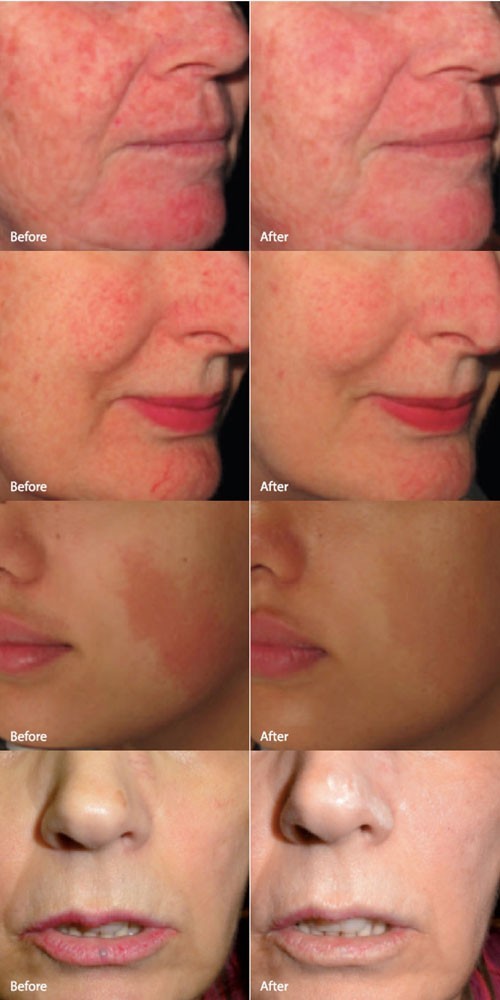Broken Capillaries on face? How to get rid of them? Whilst it is important to know the cause of the broken capillaries. Effective treatments include sclerotherapy or using a vascular laser. At HEMAC, we always combine our treatments with LED light to further reduce redness from deep under the skin.
Broken capillaries / Rosacea is a common skin disease. It often begins with a tendency to blush or flush more easily than other people.
The redness can slowly spread beyond the nose and cheeks to the forehead and chin. Even the ears, chest, and back can be red all the time.
Rosacea can cause more than redness. There are so many signs and symptoms that rosacea has four subtypes all with a background of redness and swelling of face:
- Acne rosacea : acne like breakouts in adult
- Phymatous rosacea : skin thickens, pores enlarged, bumpy skin texture
- Ocular rosacea : eye irritation, eyelid red and flaky and swollen
With time, people who have rosacea often see permanent redness and worsening of their condition.
How do HEMAC aesthetic treat Rosacea?
Our doctor will first assess the patient and find out what is the most troublesome symptom. To treat Rosacea –we generally offer a combination treatment which includes :
- Medicine that is applied to the rosacea.
- Antibiotics (applied to the skin and pills).
- Mineral Sunscreen (wearing it every day can help prevent flare-ups).
- A gentle but hydrating emollient to help repair the skin.
- Lasers and other light treatments.
Thickening and bumpiness of skin that appears on the nose and other parts of the face are treated with
- Laser – IRIS for redness and broken capillaries
- Laser resurfacing – Fraxis (procedure that removes skin).
- Electrocautery (procedure that sends electric current into the skin to treat specific sites)
Outcome
There is no cure for rosacea. People often have rosacea for years.
In one study, researchers asked 48 people who had seen a dermatologist for rosacea about their rosacea. More than half (52 percent) had rosacea that came and went. These people had had rosacea for an average of 13 years. The rest of the people (48 percent) had seen their rosacea clear. People who saw their rosacea clear had rosacea for an average of 9 years.
Some people have rosacea flare-ups for life. Treatment can prevent the rosacea from getting worse. Treatment also can reduce the acne-like breakouts, redness, and the number of flare-ups.
To get the best results, people with rosacea also should learn what triggers their rosacea, try to avoid these triggers, and follow a rosacea skin-care plan.
The following tips can be helpful for patients suffering from signs and symptoms pf Rosacea :
- See a doctor for diagnosis.
-
- Treatments can control the disease in its early stages. Control means that you will not see the rosacea. You also will not feel the symptoms such as burning and itching.
- Treating rosacea early also can stop it from getting worse. Rosacea can be more difficult to treat if it gets worse.
- Rosacea may not go away on its own and tends to worsen over time.
- Different types of rosacea require different types of treatment.
- Treatment available without a prescription can make rosacea worse. Some of these treatments contain ingredients that can cause rosacea to flare.
- Learn what triggers your rosacea. Many everyday things can cause rosacea to flare. These include sunlight, stress, and many foods and beverages.What causes one person’s rosacea to flare may not trigger a flare-up for another person. This is why dermatologists recommend that patients with rosacea learn what triggers their flare-ups. Avoiding these triggers can reduce flare-ups.
- Follow a rosacea skin-care plan. Skin care plays an important role in keeping rosacea under control. Many skin care products are too harsh. This can make rosacea worse.

